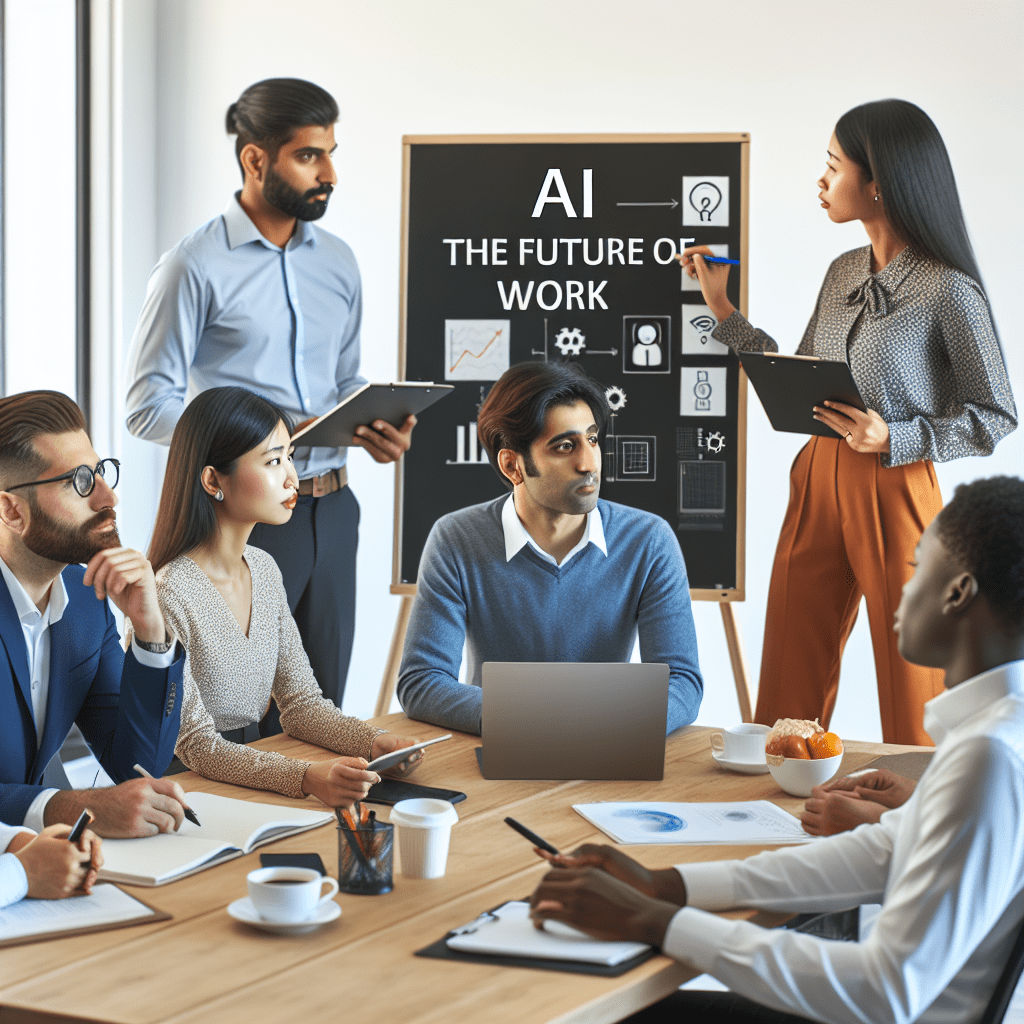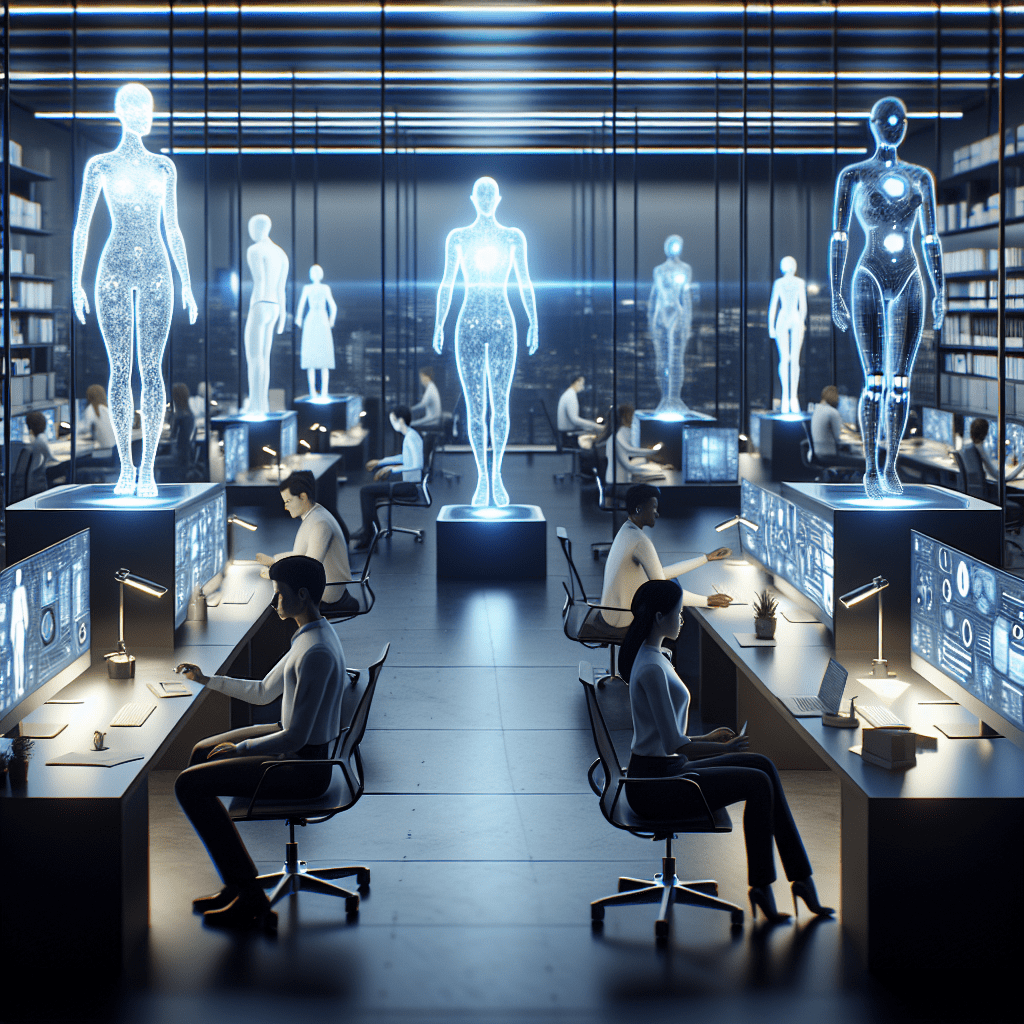Table of Contents
In today’s fast-paced, technology-driven business landscape, American companies and professionals are increasingly turning to artificial intelligence (AI) to streamline workflows, automate tasks, and maximize productivity. From intelligent virtual assistants to predictive analytics, AI-powered tools are revolutionizing the way work gets done in the United States.
The Rise of AI in the American Workplace
According to a recent survey by Gartner, 37% of organizations in the U.S. have implemented AI in some form, and this number is expected to grow rapidly in the coming years. The adoption of AI is driven by the promise of increased efficiency, cost savings, and improved decision-making capabilities.
As Aditya Kaul, Research Director at Tractica, explains, “AI has the potential to transform nearly every industry and business function. In the U.S., we’re seeing particularly strong adoption in sectors like finance, healthcare, and retail, where AI can have a significant impact on bottom-line results.”

Intelligent Virtual Assistants: The New Office Sidekicks
One of the most visible applications of AI in the American workplace is the rise of intelligent virtual assistants (IVAs). These AI-powered tools, such as Siri, Alexa, and Cortana, are becoming increasingly sophisticated and are being integrated into a wide range of business applications.
IVAs can handle a variety of tasks, from scheduling meetings and managing emails to providing real-time data analysis and customer support. By automating routine tasks and providing instant access to information, IVAs are helping American professionals work smarter and faster.
Case Study: AI-Powered Efficiency at Acme Corporation
Acme Corporation, a mid-sized manufacturing company based in the Midwest, recently implemented an AI-powered virtual assistant to help manage its supply chain. The IVA, dubbed “SupplyBot,” is integrated with Acme’s enterprise resource planning (ERP) system and provides real-time visibility into inventory levels, order status, and shipping schedules.
Since deploying SupplyBot, Acme has seen a 20% reduction in stockouts and a 15% improvement in on-time delivery rates. “SupplyBot has become an indispensable member of our team,” says Sarah Johnson, Acme’s VP of Operations. “It’s like having a super-intelligent assistant who never sleeps and always has the answers we need.”
Predictive Analytics: Forecasting the Future of Business
Another area where AI is making a significant impact in the American workplace is predictive analytics. By leveraging machine learning algorithms and vast amounts of data, predictive analytics tools can help businesses anticipate future trends, risks, and opportunities.
In industries like finance, healthcare, and retail, predictive analytics is being used to forecast demand, optimize pricing, detect fraud, and improve patient outcomes. By providing data-driven insights and recommendations, these tools are helping American businesses make better decisions and stay ahead of the curve.

Expert Insight: The Power of Predictive Analytics
According to Dr. Lisa Palmer, a renowned data scientist and author of “The Predictive Enterprise,” the potential of predictive analytics is vast: “With the right data and algorithms, businesses can essentially see into the future and make proactive, rather than reactive, decisions. This is a game-changer for American companies looking to gain a competitive edge.”
Challenges and Considerations
While the benefits of AI-powered tools are clear, implementing them in the American workplace is not without challenges. Data privacy and security concerns, the need for specialized skills, and the potential for job displacement are all important considerations.
To successfully leverage AI, American businesses must take a strategic and ethical approach, ensuring that the technology is used responsibly and in a way that benefits both the organization and its employees. This may involve investing in employee training, establishing data governance frameworks, and actively managing the impact of AI on the workforce.

The Future of Work: AI and Beyond
As AI continues to advance and become more integrated into the American workplace, it’s clear that the future of work will look very different from the past. While some jobs may be automated, others will be created, and many will evolve to incorporate AI-powered tools and insights.
For American professionals, embracing AI and developing the skills needed to work alongside intelligent machines will be key to staying relevant and competitive in the years ahead. As Daniel Newman, Principal Analyst at Futurum Research, puts it, “AI is not about replacing humans, but about augmenting and empowering them. The most successful professionals will be those who learn to harness the power of AI to enhance their own abilities and expertise.”

Conclusion
The rise of AI-powered tools in the American workplace represents both an opportunity and a challenge. By leveraging these technologies strategically and responsibly, businesses and professionals can unlock new levels of productivity, efficiency, and innovation. However, doing so will require a proactive and adaptive approach, as well as a commitment to lifelong learning and skill development.
As the U.S. continues to lead the way in AI adoption and innovation, it’s clear that the future of work will be shaped by the powerful collaboration between human ingenuity and artificial intelligence. Embracing this new paradigm will be essential for American businesses and professionals seeking to thrive in the age of AI.